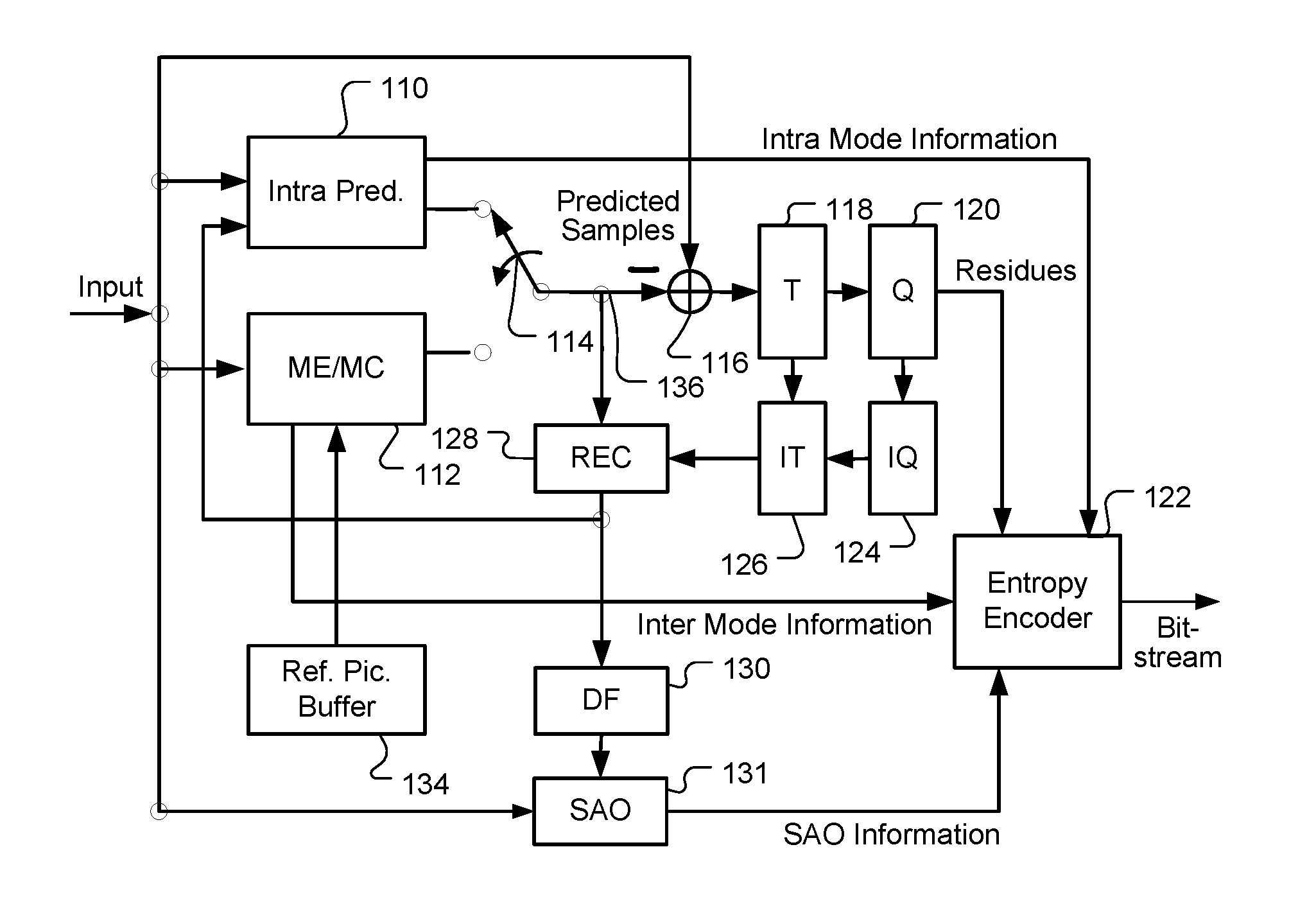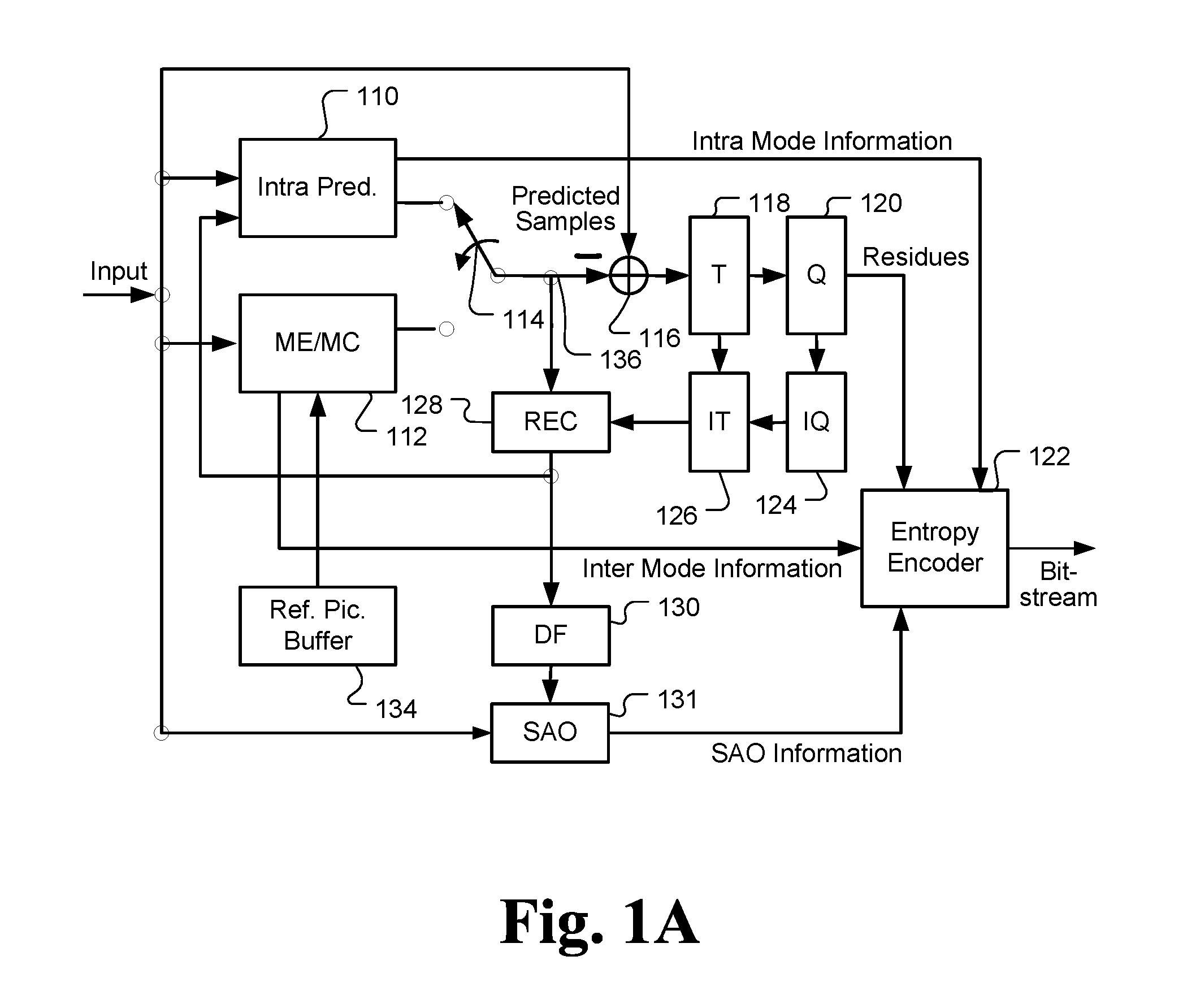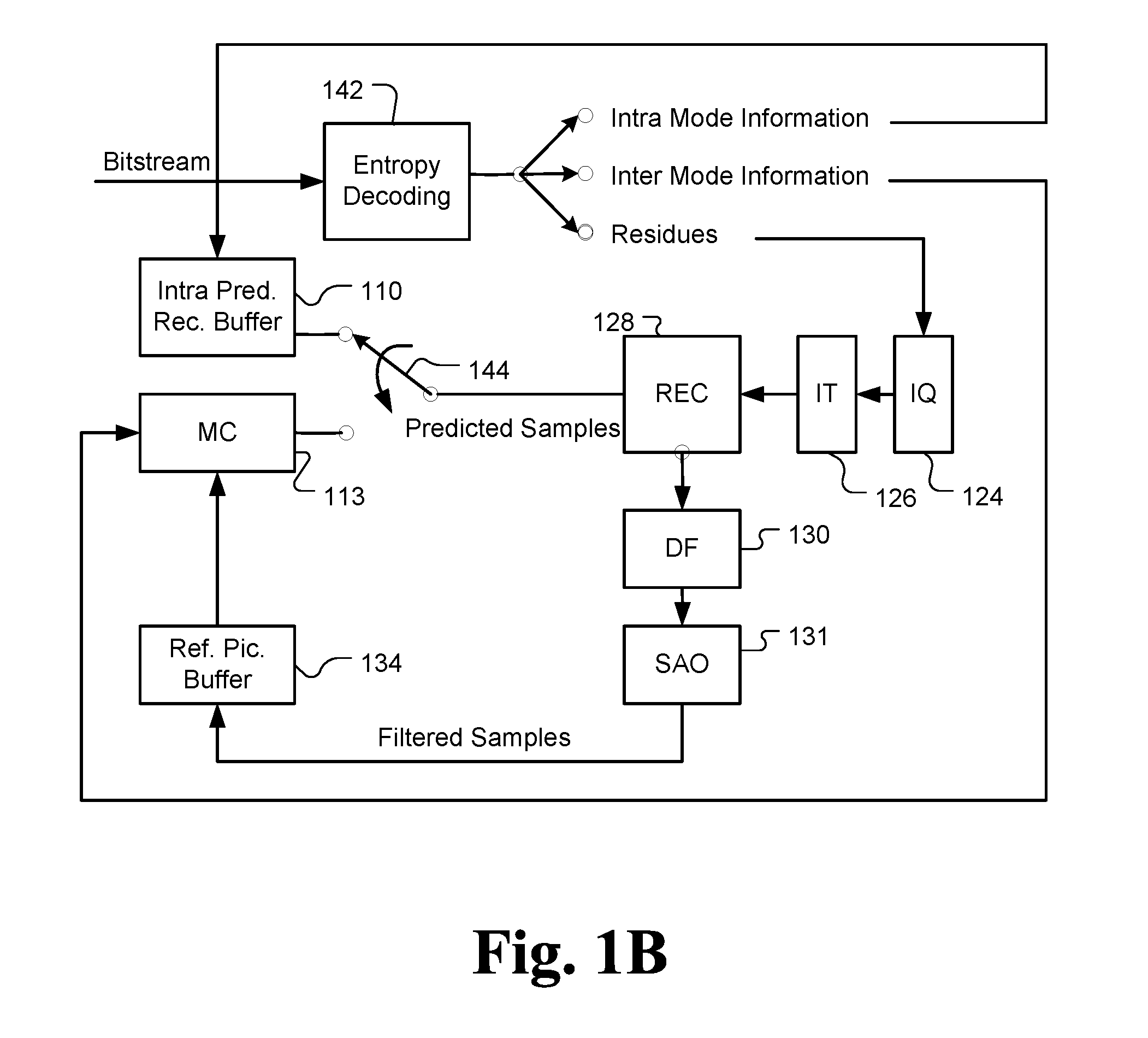Method of Lossless Mode Signaling for Video System with Lossless and Lossy Coding
- Summary
- Abstract
- Description
- Claims
- Application Information
AI Technical Summary
Benefits of technology
Problems solved by technology
Method used
Image
Examples
first embodiment
[0017]According to the first embodiment, a new syntax element can be added to the HEVC Picture Parameter Set (PPS) extension when the PPS syntax transquant_bypass_enabled_flag is equal to 1. For example a syntax cu_transquant_bypass_forced_flag can be used for this purpose to add to the PPS. When the syntax cu_transquant_bypass_forced_flag equals to 1, it indicates that an entire current picture is coded in a lossless mode. On the other hand, when the syntax has a value of 0, each CU is allowed to have its own flag cu_transquant_bypass_flag to indicate whether the CU is coded using the lossless mode or not. The syntax is inferred to be 0 when the syntax is not present or not coded. An example of the syntax modification to the PPS of the existing HEVC standard to support the first embodiment is shown in Table 1:
TABLE 1De-scrip-torNotepps_scc_extensions( ) {. . . . .if (transquant_bypass_enabled_flag)(1)cu_transquant_bypass_forced_flagu(1)(2). . . . .}
[0018]As shown in Table 1, the ne...
second embodiment
[0023]According to the second embodiment, a first new syntax element can be added to the HEVC PPS extension to indicate whether a second new syntax for forcing lossless mode will be present in the slice header when the PPS syntax transquant_bypass_enabled_flag is equal to 1. For example, cu_transquant_bypass_forced_present_flag can be used as the first new syntax element. When the syntax cu_transquant_bypass_forced_present_flag equals to 1, it indicates that the second new syntax element will be present in the slice header. Otherwise, the second new syntax element will not be present in the slice header. The second new syntax element can be cu_transquant_bypass_forced_flag. When the second new syntax element equals to 1, it indicates that an entire slice is coded in a lossless mode. When the second new syntax element has a value of 0, the lossless coding mode can be applied to individual coding units (CUs) as signaled by the syntax cu_transquant_bypass_flag for each CU. The second n...
PUM
 Login to View More
Login to View More Abstract
Description
Claims
Application Information
 Login to View More
Login to View More - R&D
- Intellectual Property
- Life Sciences
- Materials
- Tech Scout
- Unparalleled Data Quality
- Higher Quality Content
- 60% Fewer Hallucinations
Browse by: Latest US Patents, China's latest patents, Technical Efficacy Thesaurus, Application Domain, Technology Topic, Popular Technical Reports.
© 2025 PatSnap. All rights reserved.Legal|Privacy policy|Modern Slavery Act Transparency Statement|Sitemap|About US| Contact US: help@patsnap.com



